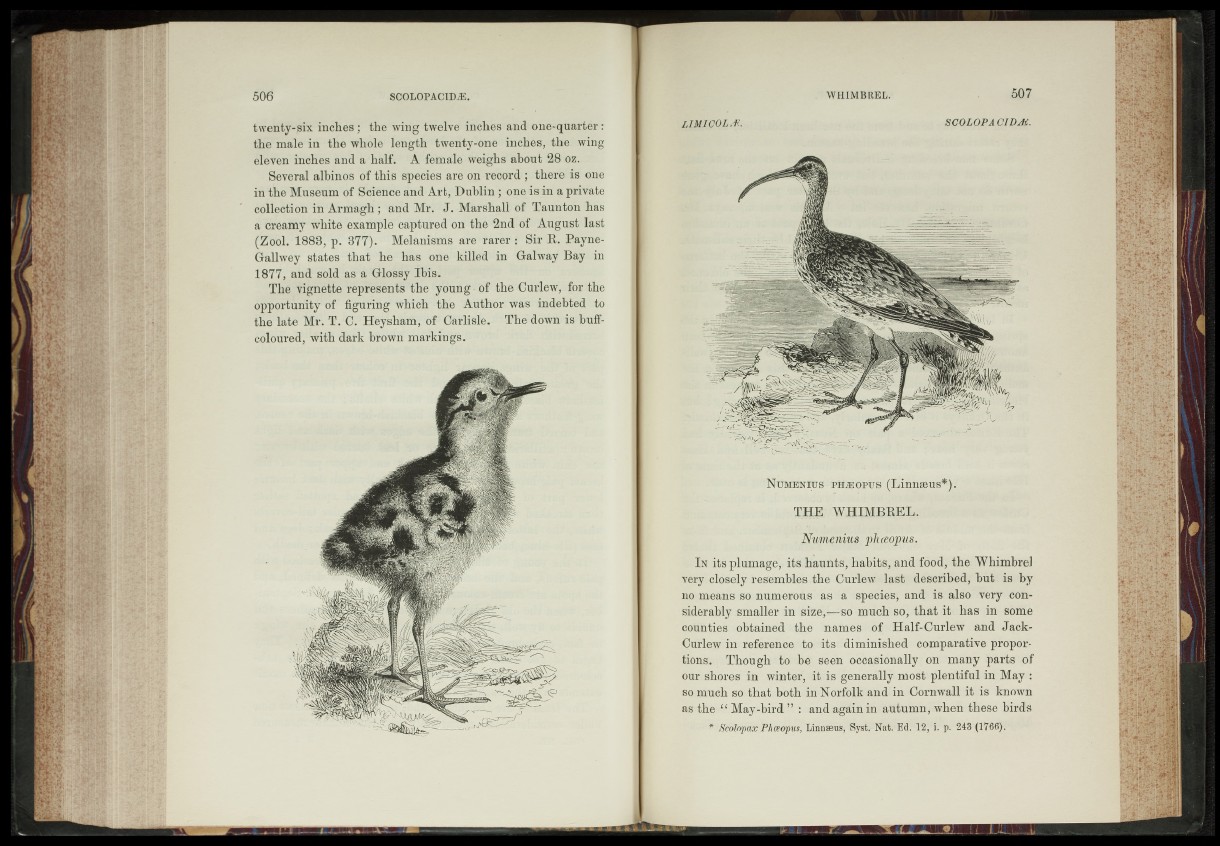
twenty-six inches; the wing twelve Inches and one-quarter r
the male in the WhMe: length twenty-one inches, the; wing
eleven inches and a half. A female weighs about 28 oz.
Several albinos of this species are on record ; there is one
in the Museum of Science and Art, Dublin; one is in a private
collection in Armagh; and Mr. J. Marshall of Taunton has
a creamy white example captured on the 2nd of August last
(Zool. 1888, p. 377). Melanisms are rarer : Sir K. Payne-
Gallwey states that he has one killed in Galway Bay in
1877, and sold as a Glossy Ibis.
The vignette represents the young - of the Curlew, for the
opportunity of figuring which the Author was indebted to
the late Mr. T.C. Hey sham, of Carlisle. ' The down is buff-
coloured, with dark brown markings.
IAM IC O L /E . SCQLOPA CIDJi.
IffhMBNTOS i-PH^iOPFS’ (liinngeus*).
THE £/WHIMBREL.
■i I n its plumage, its.haufitsftfiabits.iand food, the_Whimbrel
veiyi closely* resembles the Curlew last described, but is by
no means so nu;merb4s>as a species-; and is also' very considerably
smaller in size,■—so naaa.ch.so, that it' has in sónié
counties obtained the names- to f * /Half- Curlew and Jack-
Curlew in reference vtaoitsddiminished comparative proportions.'
Though • to be* seen occasionally * on* many parts of
our;-sB®resi in winter', ÉK-rs generally- moét* plentiful in May:
so,much so that both in-Norfolk and M Cornwall it is known
as the t£ May-bird ” i-.andagSinin autumn, when these birds
33 “Scdlopax PA^opws/Linnseus, p. 248 (1V66). 1